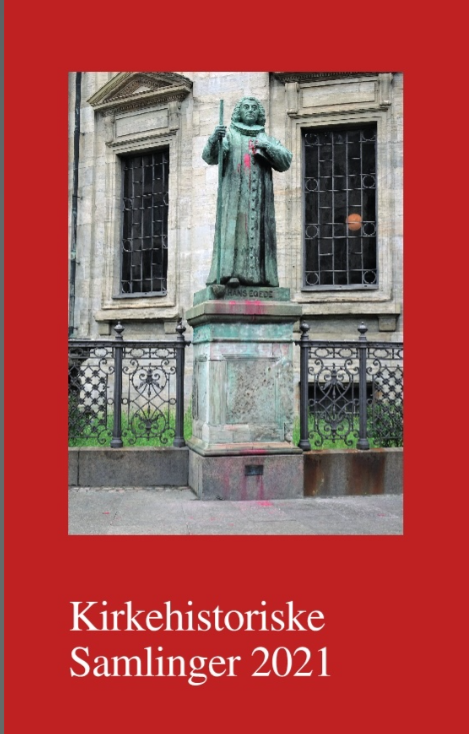Publiceret 25.02.2025
Citation/Eksport
Copyright (c) 2021 Tidsskriftet Kirkehistoriske Samlinger

Dette værk er under følgende licens Creative Commons Navngivelse – Ingen bearbejdelser (by-nd).
Resumé
I denne artikel analyseres Jesper Rasmussen Brochmands ligprædiken over Christian IV’s kansler Christian Friis. Prædikenen knyttes til en række forskellige kontekster, hvori Brochmands portræt af den afdøde indskriver sig. Sammen virker disse kontekster styrende for ligprædikenens budskab. Inden for rammerne af dette begravelsesværk analyserer artiklen særligt et digt af Brochmand og et kobberstik, som muligvis har fungeret som frontispice til Brochmands trykte prædiken. Dette stik er i sig selv en ekfrase af et ældre portræt af kansleren. Det er ligeledes muligt, at Friis’ gravmonument i Sorø er baseret på kobberstikkets repræsentation; mellem kobberstikket og monumentet eksisterer der unægtelig en forbindelse, men det er vanskeligt at afgøre det præcise forhold mellem de to repræsentationer. Artiklen fremfører ligeledes det argument, at ligprædikenens forskellige dele hænger nøje sammen. F.eks. knyttes den biografiske skildring af Friis til prædikens teologiske dele. Denne intertekstualitet er central for ligprædikens retoriske profil og dens udarbejdelse af et teologisk eksempel til efterlevelse.
Summary
This article offers an analysis of the funeral sermon for Christian Friis, the chancellor of Christian IV. Printed in 1640, the sermon was written by the bishop of Zealand, Jesper Rasmussen Brochmand, and initially delievered at the official ceremony at the Church of Our Lady in Copenhagen. The printed text, of course, is not to be mistaken for the oral event, and the article argues that the printed sermon inscribes its message in a number of contexts that lies beyond the church room. In this regard, the funeral sermon is part of a larger funeral work, and the article demonstrates how Brochmand’s sermon should be connected to two aspects of this general work of mourning; an oratio at the University of Copenhagen and a monument in the Abbey Church of Sorø. In the Latin oratio, we find an epideitic poem by Brochmand that creates an intertextual echo of his sermon. The engraved image in his sermon creates another echo, but this level of intertextuality is more composite: the engraving is itself an ekphrasis of an older portrait, while it clearly also speaks to the large sandstone monument in Sorø. In addition to the contextual analysis of Brochmand’s sermon, the article claims that the different sections of this funeral sermon form a coherent argument: the funeral biography should not be isolated from the rest of the sermon, which consists in theological elaboration. Such connections has largely been neglected in research. Indeed, Brochmand’s sermon conjures up several links that make his retelling of the chancellor’s life chime with biblical figures. His interpretation of these figures, outlined in the prefatory statement and in the long exegetical analysis that follow after the biographical account, is not mere theological ornamentation, but integral to the sermon’s rhetorical strategy that moulds Friis’ life into an exemplar.

